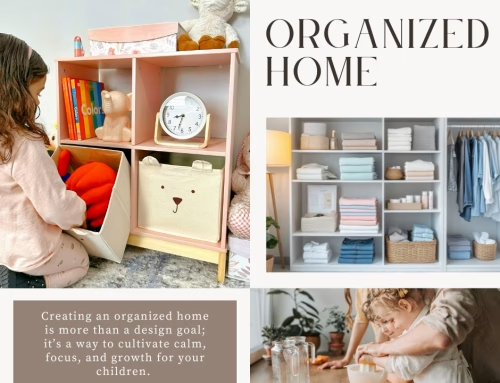My mom is 99 years old and determined to live on her own. It is so difficult to protect her from falls and in this post, I discuss tips to prevent elderly falls.
As we age, the risk of falling increases significantly, making it crucial to take proactive steps to prevent elderly falls. These falls can lead to serious injuries and even a loss of independence, but the good news is that many can be prevented with simple precautions. Whether you’re caring for a parent, grandparent, or another elderly loved one, ensuring their safety is key
Below are seven essential tips to help you effectively prevent elderly falls and provide a safer living environment.
How to Avoid Elderly Falls
1. Improve Home Lighting
One of the easiest ways to prevent elderly falls is by enhancing the lighting in the home. As we age, our eyesight weakens, making it more difficult to see obstacles. Ensuring all living areas, hallways, and staircases are well-lit can reduce the risk of trips and falls. Brighter bulbs and nightlights in key areas, such as the bedroom and bathroom, will help elderly individuals navigate their homes safely, especially during nighttime.
Pro Tip: Consider installing motion-sensor lights to automatically illuminate areas when your loved one enters a room, reducing the risk of falls in the dark.
2. Eliminate Tripping Hazards
A cluttered home increases the risk of tripping, making it essential to remove unnecessary objects. To prevent elderly falls, ensure the home is free of loose cords, throw rugs, or uneven flooring. Securing rugs with non-slip pads or removing them altogether is a simple way to avoid accidents. Additionally, rearranging furniture to create wider pathways will give elderly individuals more space to move around safely.
Pro Tip: Encourage your loved one to wear non-slip footwear inside the home instead of socks, which can lead to accidental slips.
3. Install Grab Bars and Handrails
Slippery surfaces, especially in the bathroom, pose a high risk for falls. To prevent elderly falls, install grab bars in the shower, bathtub, and near the toilet. For homes with stairs, sturdy handrails on both sides are essential for added stability. Hallways with less support can also benefit from the installation of rails, providing additional safety when walking.
Pro Tip: Opt for grab bars with a textured surface, as they offer a better grip when wet, reducing the chance of slipping.
4. Encourage Regular Exercise
Improving strength and balance is an effective way to prevent elderly falls. Regular exercise, such as walking, stretching, or senior-friendly yoga, can enhance coordination and flexibility. These activities help strengthen muscles, making it easier to maintain balance and avoid falls. A physical therapist can create a personalized exercise plan tailored to your loved one’s abilities and needs.
Pro Tip: Consider introducing your loved one to gentle activities like Tai Chi, known for improving balance and reducing fall risk in older adults.
5. Review Medications
Some medications can cause dizziness or drowsiness, increasing the risk of falls. To prevent elderly falls, review medications with a healthcare professional regularly, especially when new prescriptions are added. Your loved one’s doctor may adjust doses or suggest alternatives that are less likely to affect balance. It’s important to stay informed about potential side effects and how they may impact daily movement.
When a change is made to their medication, it is important to monitor them closely over the next few days to make sure they are stable.
Pro Tip: Keep an updated list of medications and bring it to all doctor visits to prevent any harmful interactions that could increase fall risk.
6. Use Mobility Aids
Mobility aids like canes and walkers provide essential support for elderly individuals with balance issues. To prevent elderly falls, ensure that your loved one is using their prescribed mobility aid consistently. These devices offer extra stability, making movement safer. It’s important to make sure that the aid is properly fitted, as an ill-fitting cane or walker can increase the risk of falling.
Pro Tip: Ensure mobility aids are adjusted to the correct height to maximize safety and comfort during use.
7. Schedule Regular Vision and Hearing Checkups
Poor vision and hearing can contribute to falls by making it difficult to notice obstacles or judge distances accurately. To prevent elderly falls, schedule regular checkups to ensure your loved one’s vision and hearing are in good condition. Updated prescriptions for glasses or contact lenses, as well as hearing aids when necessary, can significantly reduce the chances of falling.
Pro Tip: Make sure your loved one uses their glasses or hearing aids as prescribed, and optimize lighting in key areas for those with vision issues.
Additional Tips to Prevent Elderly Falls
- Stay Hydrated: Dehydration can cause dizziness, increasing the risk of falls.
- Use Fall Detection Devices: Consider investing in wearable fall detection devices that alert caregivers if a fall occurs.
- Encourage Communication: If your loved one feels unsteady or has had a near-fall, encourage them to speak up so you can address any concerns early.
Taking preventive measures is key to ensuring the safety of elderly loved ones. By following these seven essential tips to prevent elderly falls, you can create a safer living environment and reduce the risk of injury. From improving home lighting to encouraging regular exercise, these steps will help safeguard your loved one’s well-being and give you peace of mind.
Other posts you might enjoy:
Grab Rails; Home Adaptations for Increased Independence
7 Smart Reasons Multi-Generational Home Interiors Are Essential in Today’s World





